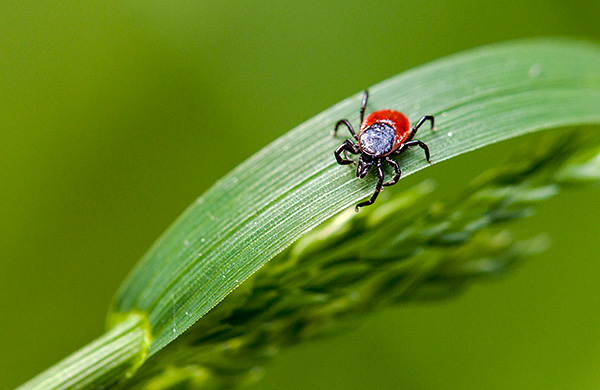
Ixodidae (family Ixodidae) is a small group of Arachnids. This family is one of the most studied, since it consists of the largest parasite mites of humans and domestic animals. The family throughout the world has more than 600 species, with about 60 in modern Russia.
All ixodid ticks are temporary parasites.. They are called temporary because they are not on the host’s body throughout life, but only during feeding (feeding with blood is crucially important for the reproduction process of these ticks, since additional feeding is not typical for them).
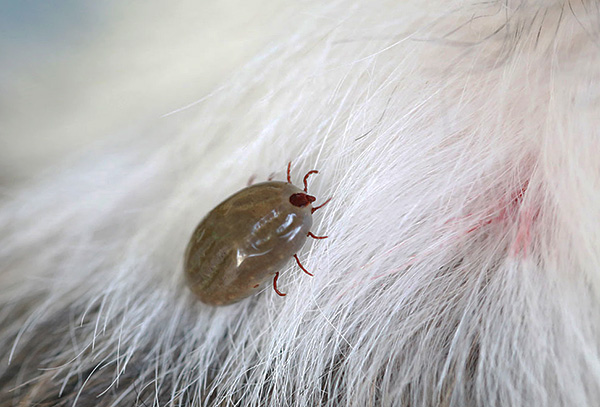
Increased interest in this family is primarily due to the fact that its members suffer dangerous diseases such as encephalitis, typhus, tularemia. From the point of view of epidemiology, the taiga tick (lat. Ixodes persulcatus) and the dog tick (lat.Ixodes ricinus), which are widely distributed in Russia and are carriers of tick-borne encephalitis.
About how the reproduction of these ticks, we will continue to talk ...
Mass reproduction and spread of ticks
Despite the fact that the dog and taiga ticks are fairly common for our territory, you can meet them far from everywhere. They live in deciduous and coniferous forests with lush grass and shrub vegetation. Moreover, the hotter the region, the more wet areas mites prefer, and vice versa.
The characteristic habitats of ticks are the sun-covered wet edges of forest areas, trails and lawns of parks, and vegetation near water bodies, which are well lit by the sun. If the tick finds favorable conditions for its residence, it begins to actively multiply.

For ticks, active outbreaks are described, when a large number of adults and their larvae are concentrated in a small, favorable area. It is not necessary to explain that when a person enters such biotopes, contact with ticks is almost inevitable.
Foci of mass reproduction of ticks in the north of Russia also arise on the borders of various natural stations (rough terrain), when deforestation parasites move to pastures,where they actively feed on farm animals. In nature, reproduction of ticks is constrained by the low density of victims, but on the pastures of the owners there is more than enough.
The phenomenon of mass reproduction is also dangerous due to the fact that when a population reaches a certain density, there is a massive resettlement of parasites to neighboring territories, where, over time, outbreaks of numbers also occur. If such a population includes mites that carry any disease, such as encephalitis, the disease migrates along with its “owners” farther and farther. This can threaten a high incidence among people and even an epidemic.
It is possible to allocate places with a significant likelihood of such an outbreak, but it is extremely difficult to predict, because many factors affect the reproduction of ticks (see below), including weather conditions, which differ greatly in different years.
Features of the life cycle
By life cycle they mean the entire period of development and life of an organism - in this case, from an egg to an adult, sexually mature individual. The life cycle of encephalitic ticks is quite complicated, characterized by a change of owners and lasts more than 1 year.It consists of an egg, a larva, a nymph and an adult (imago).
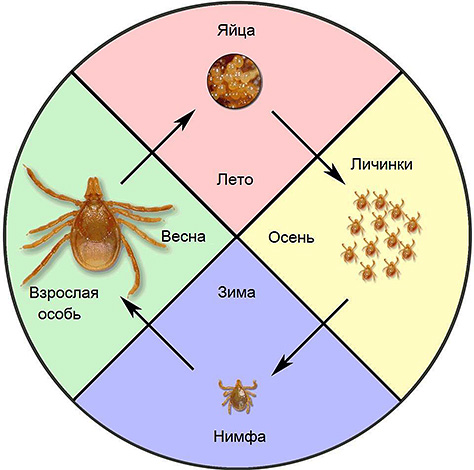
We begin the description of the life and reproduction of ticks from the meeting of the sexes. The male and female are usually found in nature, much less often on the host organism. The latter is less characteristic, since the chances of parasitizing 2 ticks on 1 organism are relatively small.
After the male finds the female, fertilization takes place. An interesting mechanism for the transfer of seed material. Copulation or intercourse does not occur. The male leaves on the substrate a peculiar bag with spermatozoa (spermatophore), which protects the sperm from the action of external factors. The female creeps up to the capsule and captures it with special flaps located near the genital opening, like tweezers. This is fertilization.
On a note
The male and female ticks are easily distinguished from each other even by the man in the street. If you look at the tick from above, you can see that its body is covered with a shiny, dense chitinous shield that performs a protective function. In males, this shield covers the entire back, and the body, while feeding, cannot stretch much. In females, however, the shield is smaller and covers only half of the back, due to which its body can increase in size several times.

After fertilization, females begin to actively seek prey for food.Ticks are characterized by the so-called “gonotrophic harmony”, when the process of feeding is closely connected with the maturation of eggs. In simple terms, almost all the nutrients extracted from the blood will go to the development of eggs.
Accordingly, each laying of the egg is necessarily preceded by a sucking. Because of this, females are very voracious - their abundant food is the key to successful reproduction. Males eat less and in smaller quantities. In some species of ticks, males do not feed at all, and after the transfer of seed material they die.
It is interesting
In some species of Ixodes, males do not look for victims on their own. During the sexual process, they pierce the integument of the female and feed on the contents of her intestines, without causing significant damage to her. It also has little effect on egg laying.
Females suck blood for a long time, on average, about 10 days. Soft covers provide the ability to consume large amounts of blood. Sometimes it takes 20 minutes to feed the males.
The female tick begins to lay eggs a week or a month after she finished feeding (the rate of egg ripening depends on external factors).Laying lasts about a month, while the tick lays eggs in small groups, as they mature.
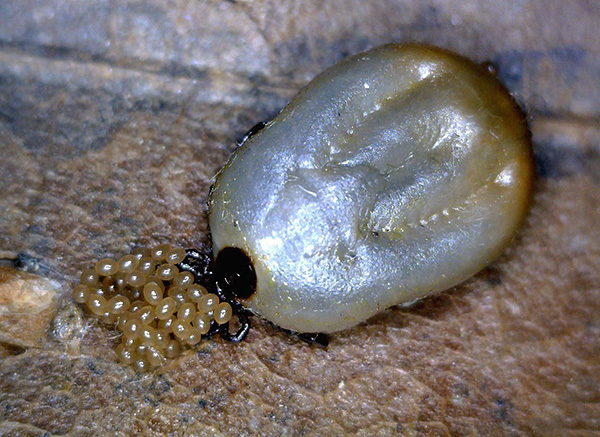
Ticks are very prolific - up to 2000 eggs can be found in their clutches. The number of eggs depends on how well-fed the female is, and anxiety plays an important role. Supplemental feeding is peculiar to female ticks, when the first was not enough. Sometimes ticks feed directly during the laying of eggs, which naturally makes it longer.
Masonry are located either on the soil in the natural environment, or (much less often) on the host's body, which increases the chances for feeding of future larvae.

Within a month after laying eggs larvae hatch. They are small, outwardly similar to adult ticks, but there are a number of differences. The larvae have 3 pairs of walking legs (like insects) and no genital opening.
Some time after they leave the egg, the larvae sit on the clutch, waiting for their outer cover to harden. Then they crawl away in search of the victim.
The aggregation of larvae on the clutches is known even after the hardening of the integument — hungry individuals do not disperse, but expect a future victim on the surface of plants or soil.Then not one larva is attached to the host, but several at once. This weakens the immune response of the victim and promotes better saturation of the larvae.
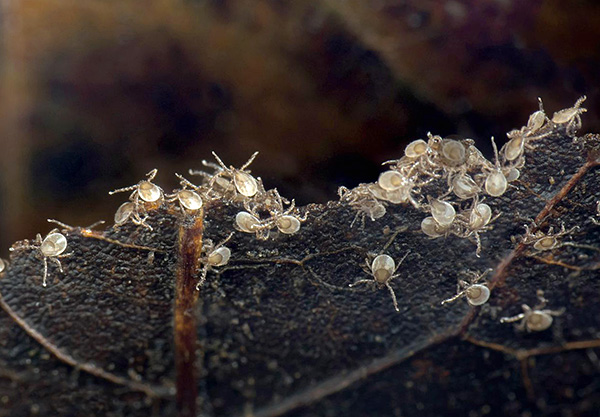
The larvae feed on for 2-4 days, after which they detach from the host, or stay for some time on it, using it as a shelter. Then they again fall into the natural environment, where molting in the nymphs.
Tick nymphs are similar to adults (adults), have 4 pairs of walking legs, an oval body with dense integuments, but there is no genital opening yet.
A molt in the life cycle of these parasites can be considered a kind of diapause, in which ticks do not feed and do not move, complex biochemical processes take place in their bodies. Even after ixodides fade, they are not capable of active life for some time, because the changes in the body continue.
Shedding is necessary for all arthropods, as the dense chitinous external skeleton hampers growth and development. It is during this short period of time, until the old covers disappear, and the new ones have not yet hardened, and the body grows. The remaining time is spent preparing for this process.
The phased type of development allows eventually to start feeding on larger prey and occupy other ecological niches - this is an important evolutionary mechanism that allows reducing trophic and stationary intraspecific competition, which means increasing the chances of the population for active reproduction.
Adults do not grow, their appearance remains unchanged.
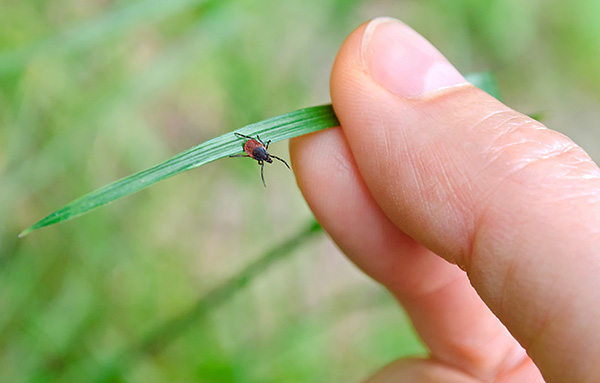
It is interesting
The shape and size of the body of imago mites, like insects, are unchanged and are a species characteristic by which the organism can be determined. A good example is ladybugs, the size of the body and the number of points on which remain constant and serve to identify the species.
Nymphs feed on the host for about a week, after which they leave it. After some time, they either go for the winter, or turn into imago. Larvae, nymphs and adults can winter.
There are cases of wintering ticks in the ears and other parts of the body of ungulates. But more often, ixodid mites overwinter in their natural habitats: under the plant dendrite, in the soil, under stones and old wood, under the bark of dry trees, in the burrows of mammals and bird nests.Sometimes ticks remain in cattle yards, in outbuildings, where they are brought by domestic animals.

In general, diapause in Ixodes ticks is not obligate, that is, it is not mandatory. At sufficiently high temperatures, ticks can not fall into a state of rest and continue their development in the winter indoors.
For most ticks, the life cycle is three years. The general scheme looks like this:
- adults in spring (April-May) actively attack vertebrates. This period is characterized by the greatest dynamics of the taiga and dog ticks, so when walking in nature you need to be especially careful. At the end of the summer, as a rule, adults do not feed on animals. Larvae appear in the second half of summer. Regardless of whether they are full or not, wintering care takes place;
- During the entire second year, the larvae develop and molt into nymphs. Hungry and full nymphs go to winter;
- In the third year, nymphs are already actively feeding, and at the end of the summer they turn into adult individuals. In the fall, imago victims are not looking for and immediately fall into diapause.
Now it becomes clear why the danger of contact with mites increases in the spring.In areas with dry hot weather, the cycle can take place rather quickly, in 1-2 years - then the dynamics indicators are high not only in spring, but also in autumn.
In the laboratory, studies were repeatedly conducted on the duration of reproduction of ixodic ticks in general. The result is data that varies over a wide range: from 200 to 2000 days (the reproduction rate in nature corresponds to the middle of this range).
Thus, the life cycle of ticks is characterized not only by longstanding, diapauses and molts, but also by a change of hosts, as well as alternation of parasitism with a free-living lifestyle. On the diversity of the owners, we just talk further.
Animals on which forest ticks breed
Canine and taiga ticks use a wide range of hosts. Moreover, both warm-blooded and cold-blooded animals can become victims. These are large domestic and wild artiodactyls, horses, sheep, wild boars. Smaller animals: dogs, cats, badgers, hares and others.
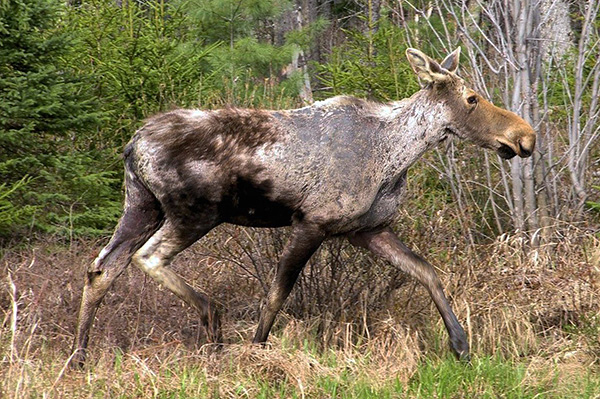
The photo below shows an example of parasitizing a large number of ticks on the body of an elk:
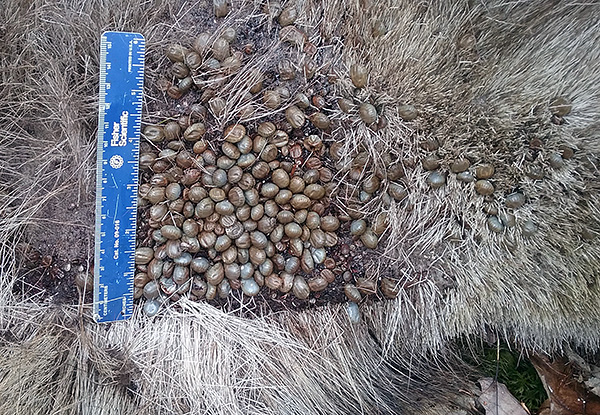
The largest spectrum of parasitization is observed in small mouse-like rodents, including their burrows: dormice, vole, forest mouse. Such insectivores, like a hedgehog and a mole, ticks also did not deprive with their attention.Among reptiles, parasitization has been observed in lizards and snakes. The favorite prey of the nymphs are sedentary birds.
The development of encephalitic ticks occurs in a three-host type. This means that throughout the entire life cycle, the tick feeds on three different, systematically, animals.
Larvae choose a smaller host. Massively they can be found on mice, proteins, hedgehogs. The larvae tend to feed on reptiles, and sometimes amphibians, which the nymphs are already avoiding. Nymphs choose a host larger - for example, a dog, a cat, different birds. The taiga tick prefers juvenile grouse individuals.
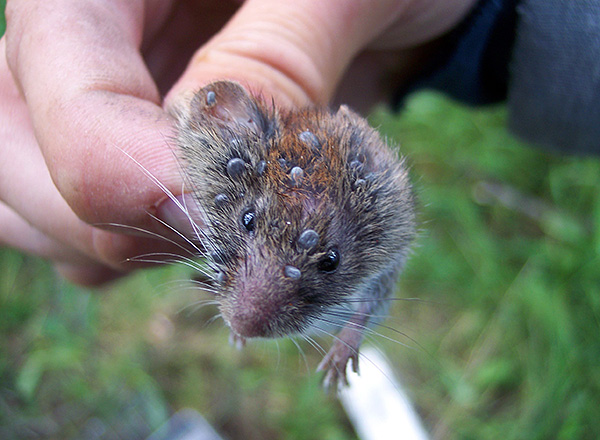
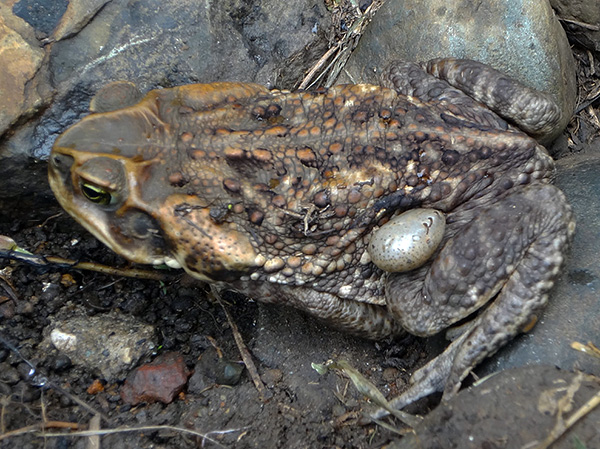
On a note
Tick nymphs also perform a settlement function. For this they use various animals. Clinging to their wool, mites can move long distances. They also migrate with flying birds, so nymphs can end up in unusual habitats. This phenomenon is called zoohoria.
Factors that affect tick reproduction
The rate of reproduction of ticks is strongly influenced by external factors.
Here are the most important ones:
- Temperature.One of the most important factors that affects the reproduction rate of ticks is temperature. Ticks are rather cold-resistant, and many of them live in northern latitudes, however, severe frost is especially dangerous for them during wintering. The older the tick, the more resistant it is to low temperatures. At -10 ° C, the larvae, nymphs and adults survive more than 7 days, but this is far from the limit. With more severe frosts, behavioral protection mechanisms are activated — ticks hide under the snow, in shelters, burrows, outbuildings, and barnyards. The effect of high temperatures also negatively affects ticks - overheating disrupts metabolic processes, decreases activity and the desire to feed. It should be borne in mind that the temperature on the surface of the host body is usually higher than in the natural environment. Temperature maximum does not exceed + 50 ° С;
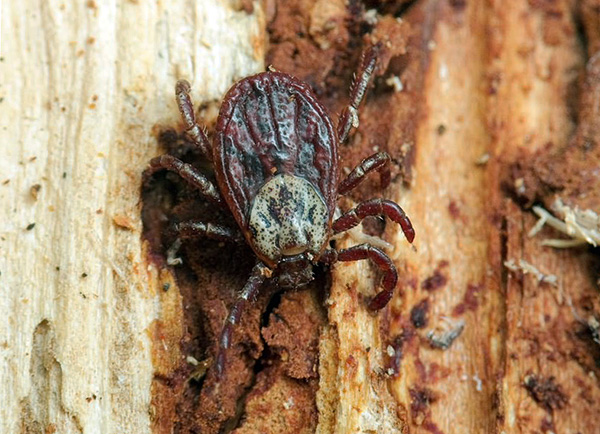
- Humidity - plays a very important regulatory role in the development and reproduction of ticks. Mites avoid direct sunlight precisely because of the risk of moisture loss by the body. All arthropods, despite the dense chitinous integument, very quickly lose water from the body.Such a durable external skeleton does not protect them from dehydration. Excessive moisture loss prevents lipid (wax) layer. The hotter and drier the climate in which this or that group lives, the more strongly this layer is developed. The soft integuments of ixodid mites very quickly pass water, which greatly affects the state of their body and, accordingly, further reproduction. In dry years, the number of ticks decreases sharply, whereas years with heavy rainfall are characterized by outbreaks of mass reproduction;
- Anthropogenic factor. People, disrupting the natural habitats of ticks, change food chains and destroy habitual stations. Ticks have to migrate and adapt to new conditions;
- Nutrition. Well-fed individuals hibernate more successfully, laying more eggs. Larvae that do not need food, more quickly shed in nymphs, and nymphs - in adults. Fertility directly depends on how favorable conditions are in the specified year in the specified territory.
The photo below shows the blood-tickled female tick:
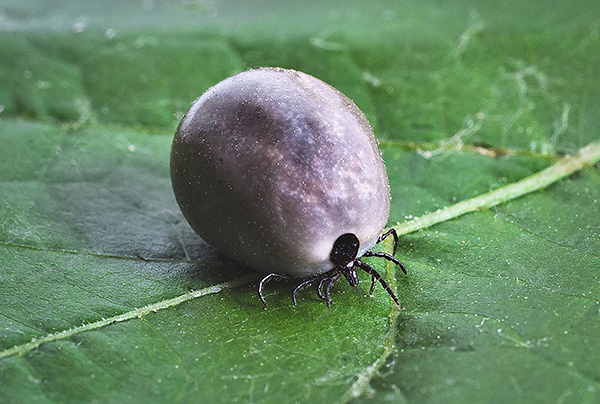
On a note
There is an opinion,that the burning of vegetation in typical places of reproduction and development of ticks can significantly reduce their numbers, but this is not quite true (the effect is usually only temporary). But the damage to the biocenosis as a whole will be significant. Treatment of such sites with acaricides also does not always give the desired result.
Can ticks develop on a dog and other domestic animals?
As noted above, ticks often use pets as an object of nutrition. Dogs are no exception - many of you have probably come across ticks on the back of your neck or ears of a dog after a walk.
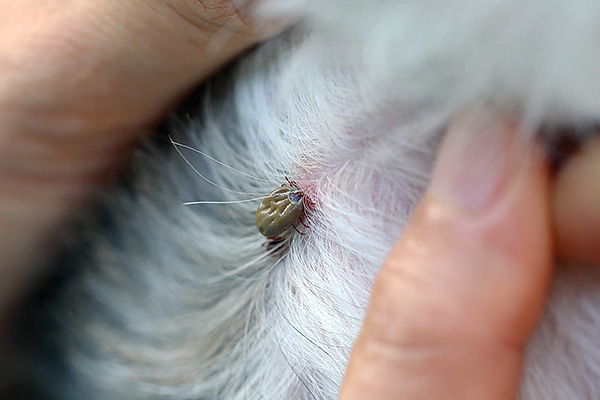
What to do if you did not notice the tick in time, and the dog brought it to the apartment? Will the parasite be able to breed directly on the dog in the conditions of the room?
So, the nymph or imago will be on your pet only during feeding, and then they will disappear. Do not notice the parasite will be difficult. Some danger is that eggs can be laid on the dog. But this problem is also easy to solve, if your pet is properly looked after - regular inspection of the characteristic attachment points (scruff, ears, eyes) will save you from unnecessary consequences.
If you saw your pet tick - do not panic. It is necessary to carefully remove the body of the parasite with tweezers, without pressing on it, and then treat the wound. At the end of the procedure, wash your hands thoroughly with soap and water. If you are afraid to extract the parasite yourself - take the pet to the vet.
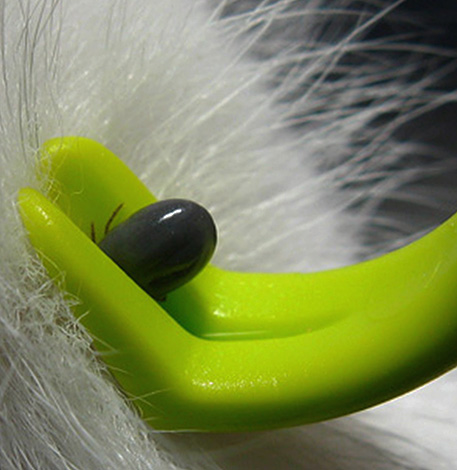
For several days after the extraction of the tick, watch the dog for redness and boils near the site of attachment. But usually the dogs tolerate such parasitism painlessly, and there will be no significant harm to your pet's health.
Reproduction of ticks in an apartment: probability, risks, prevention
The passage of the tick of the full life cycle within the same apartment is extremely unlikely, almost impossible. These representatives of arachnids encounter humans and pets only when they need food and during the search for suitable wintering grounds. They prefer to lay eggs and molt under natural conditions.
Let's still imagine the possible course of such a life cycle in an apartment.
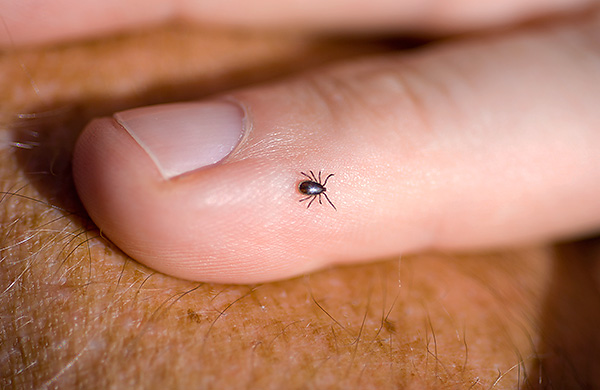
So, the mite imago enters the apartment with you or your pets.Also, a tick can independently appear in a house, for example, from a nearby lawn in spring, through an open door.
To lay eggs, the female must be fully fed. After that, the eggs can develop normally, if the humidity is high enough. Further difficulties begin - the larvae come out of the eggs, which need food again. Having gotten drunk, the ticks need to go on wintering, and then everything should repeat with the nymph before turning it into an imago.
It turns out that, unlike fleas and bed bugs, which are well developed in residential areas, ticks, having a complex three-year cycle with a change of owners, are deprived of the possibility of development in a limited space of an apartment or a private house.
So the most likely and dangerous contact with mites in natural conditions, during their mass reproduction.
In conclusion, we note that such a difficult method of reproduction affects the state of the population of ixodid ticks in general. Permanent changes of stations and owners lead to a high mortality rate among eggs, larvae and nymphs. However, in nature everything is compensated. Like all parasites, ticks are very prolific,and enough juveniles live to adult individuals to maintain the population at the proper level.
Interesting video: how ticks lay eggs after a bite
The life cycle of development of ixodic ticks

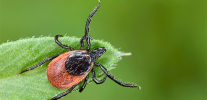
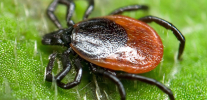
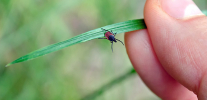
Useful info!
Very informative, thanks.
The dog (puppy small breed) brought tick. The dog is very fluffy, so they noticed a tick when there were already larvae (many small black dots around).Ticks were removed in the clinic, the bite was treated. Tell me if these little faces are dangerous for us, if they can live and develop in bedding, because the dog was lying on the bed before the tick was noticed, and the little faces probably fell on the linen. The clinic assured that they should not worry, they themselves will die. But still there are doubts.